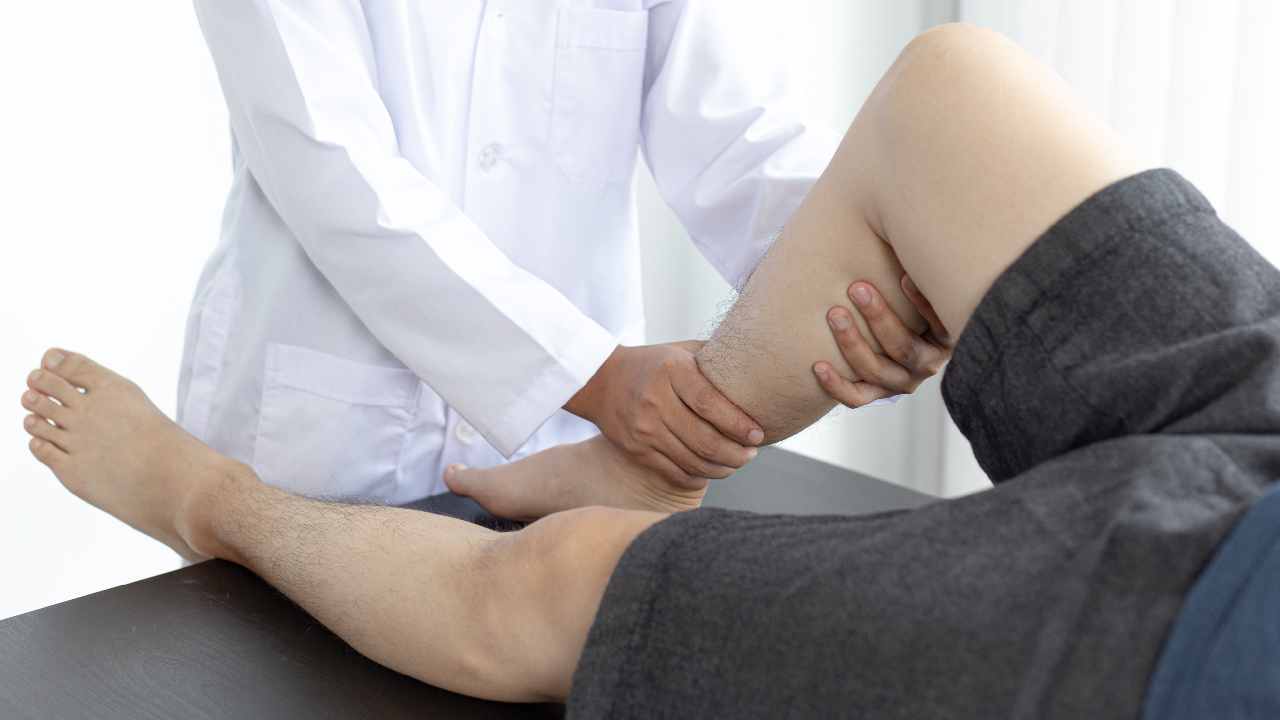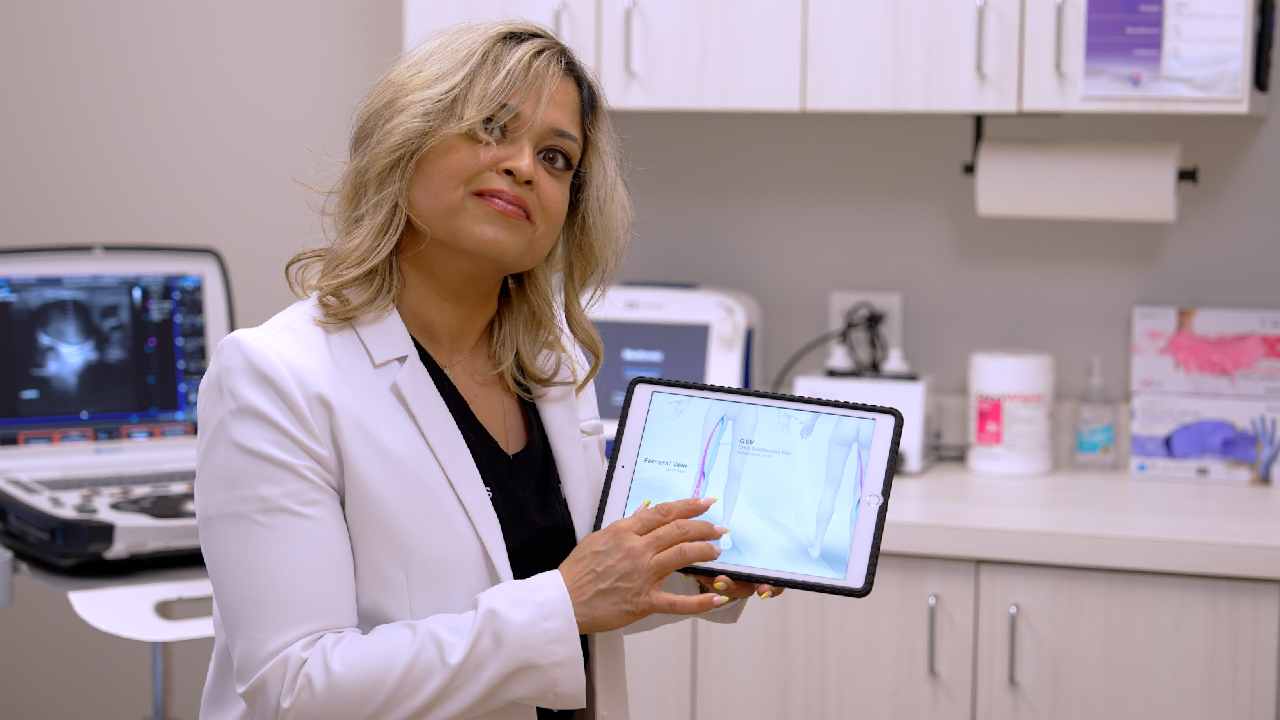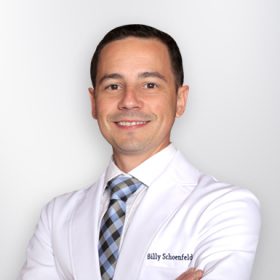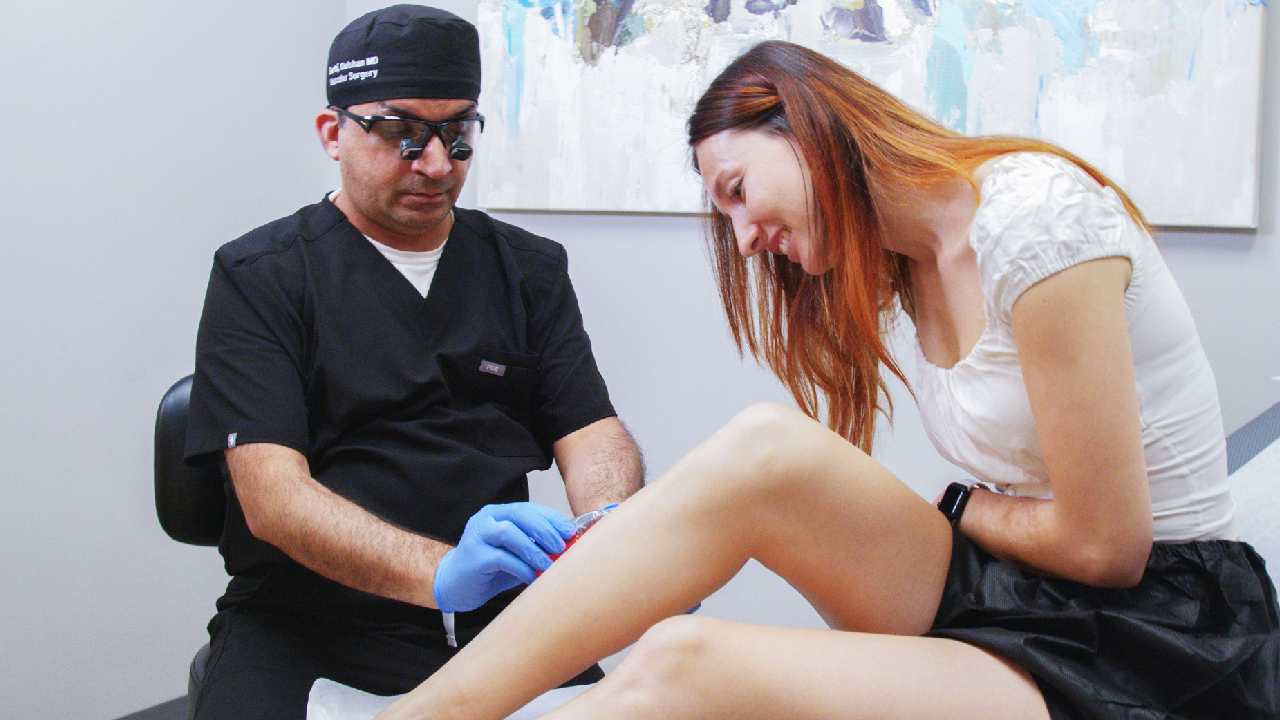
Find the Best Heavy Leg Syndrome Treatment!
Summary
The best heavy leg syndrome treatment depends on the underlying cause of your symptoms, which can vary from poor circulation to venous insufficiency. While there are several options to manage this condition, minimally invasive treatments have proven to be the most effective.
Have you ever felt like your legs are weighed down, sluggish, or painful, especially after standing or sitting for long periods? If so, you may be dealing with heavy leg syndrome. This condition is more common than you might think, and it often presents itself as a feeling of discomfort or swelling in the legs, making it difficult to enjoy daily activities.
Vein Treatment Clinic specializes in diagnosing and treating conditions like heavy leg syndrome. We offer minimally invasive vein treatments to help you find relief and improve your quality of life. Our experienced vein doctors at locations nationwide, including in New York, New Jersey, California, and Maryland, are ready to help you identify the root cause of your symptoms and recommend the best heavy leg syndrome treatment options.
Are you interested in getting more information about your condition or getting a treatment?
Fill the form below to start!
What is Heavy Leg Syndrome?
Heavy leg syndrome is a condition where individuals experience an uncomfortable, “heavy” feeling in their legs. This sensation often worsens with standing or prolonged sitting and may include aching, swelling, and a general feeling of fatigue in the lower limbs. While the discomfort might start mild, it can progress over time, affecting mobility and daily life.
Though it may not always signal a serious condition, heavy leg syndrome is often a sign of underlying vein issues, such as varicose veins or chronic venous insufficiency (CVI). It’s important to get a diagnosis early on to prevent the condition from worsening.
Signs and Symptoms of Heavy Leg Syndrome:
Here are some common symptoms to look out for if you suspect you have heavy leg syndrome:
- You feel a sensation of weight or heaviness in your legs.
- Your legs feel fatigued after standing or sitting for long periods.
- Swelling in the feet, ankles, or calves is noticeable.
- Your legs ache or throb, especially at night.
- The discomfort gets worse as the day goes on.
- You experience cramping or restless legs, particularly when sitting still.
- Your skin appears discolored or feels tight around the calves.
Possible Causes of Heavy Leg Syndrome
Varicose Veins
Varicose veins are enlarged, swollen veins that can often be seen on the surface of the skin. They occur when the veins are unable to properly pump blood back toward the heart, leading to blood pooling in the legs. Over time, this can result in discomfort, swelling, and a heavy feeling in the legs. Varicose veins are a common cause of heavy leg syndrome.
Chronic Venous Insufficiency (CVI)
Chronic venous insufficiency occurs when the veins in the legs are unable to return blood to the heart effectively. This leads to blood pooling, causing pressure to build in the veins. Symptoms of CVI include swelling, pain, and the sensation of heavy legs. If left untreated, CVI can worsen over time, leading to more severe complications such as skin ulcers or blood clots.
Obesity
Being overweight places additional pressure on your veins, particularly in the legs. This can contribute to poor circulation and exacerbate symptoms of heavy leg syndrome. Weight management and physical activity can help reduce symptoms and improve circulation.
Pregnancy
Pregnancy causes significant changes in a woman’s body, including increased blood volume and hormonal fluctuations. These changes can put extra pressure on the veins, leading to poor circulation and heavy leg syndrome, especially in the later stages of pregnancy.
Sedentary Lifestyle
A lack of movement can reduce blood flow in your legs, leading to symptoms of heavy leg syndrome. Sitting or standing for prolonged periods without stretching or moving can contribute to poor circulation, swelling, and leg fatigue.
Signs Indicating Your Heavy Leg Syndrome is Caused by CVI
If you have chronic venous insufficiency (CVI), there are certain signs that can help you identify this as the underlying cause of your symptoms:
- You have visible varicose veins or bulging veins in your legs.
- Your legs are swollen, especially after standing for long periods.
- Your skin appears brownish or discolored, particularly around the ankles.
- You experience persistent pain or aching in your legs, even when at rest.
- Your skin feels tight or hard, particularly around the calves.
- You’ve developed ulcers or open sores on your legs that are slow to heal.
If these symptoms sound familiar, it’s essential to get an accurate diagnosis from a vein specialist to determine if CVI is the cause of your heavy leg syndrome.
What is the Best Heavy Leg Syndrome Treatment?
At Vein Treatment Clinic, we begin with a comprehensive diagnosis using duplex ultrasound to determine the root cause of your heavy leg syndrome. Once we’ve identified the underlying issue, we create a treatment plan that may include lifestyle changes, compression therapy, and minimally invasive vein treatments. Here’s how each heavy legs treatment works:
Lifestyle Changes
- Exercise regularly to improve circulation and reduce swelling.
- Elevate your legs whenever possible to help fluid return to the upper body.
- Maintain a healthy weight to reduce pressure on your veins.
- Avoid standing or sitting for long periods—take breaks to move around.
Compression Stockings
Compression stockings apply gentle pressure to your legs, helping to improve circulation and reduce swelling. They are particularly effective for individuals with CVI or varicose veins. By supporting the veins and preventing blood from pooling, they relieve heavy legs.
Minimally Invasive Vein Treatments:
- Sclerotherapy: A solution is injected into the affected veins, causing them to collapse and eventually disappear. This is effective for treating smaller varicose veins and spider veins.
- Endovenous Laser Ablation (EVLA): A laser fiber is inserted into the vein to deliver heat to close it off. This vein treatment is highly effective for larger varicose veins.
- Radiofrequency Ablation (RFA): Similar to EVLA, RFA uses radiofrequency energy to close off the affected veins, improving blood flow and reducing the symptoms of heavy legs.
- VenaSeal: A medical adhesive is used to seal off the problem vein. This is a minimally invasive, no-needle option with little to no downtime.
FAQs
Do varicose veins go away?
Do varicose veins go away? Varicose veins typically do not go away on their own. However, effective treatments like sclerotherapy and endovenous laser ablation can significantly reduce their appearance and alleviate associated symptoms like heavy leg syndrome.
Can varicose veins go away?
Can varicose veins go away? Varicose veins will not disappear without treatment. Minimally invasive vein treatments like endovenous laser ablation are often recommended to treat varicose veins and improve circulation, ultimately reducing heavy leg symptoms.
Where can I find spider vein removal near me?
If you’re searching for spider vein removal near me, look no further than Vein Treatment Clinic. We offer specialized treatments to eliminate spider veins and improve circulation at multiple locations across the country.
How to get rid of veins on legs?
How to get rid of veins on legs? To get rid of veins on legs, minimally invasive treatments like sclerotherapy, endovenous laser ablation, and radiofrequency ablation are effective options. These procedures target and close off damaged veins, improving circulation and reducing symptoms like heavy legs.
How to get insurance to pay for varicose vein removal?
How to get insurance to pay for varicose vein removal? Most insurance plans cover varicose vein removal if the procedure is deemed medically necessary. Contact us to verify your insurance details, and our team will help guide you through the process.
Does Medicare pay for compression stockings?
Does Medicare pay for compression stockings? Medicare may cover the cost of compression stockings if you have a medical condition like chronic venous insufficiency (CVI). Contact us to request insurance verification and understand your options.
If you’re experiencing heavy leg syndrome, it’s important to seek professional care. Vein Treatment Clinic offers personalized solutions to help you regain comfort and mobility. Visit your nearest vein treatment clinic today.
FEATURED POSTS BY VEIN DOCTORS














